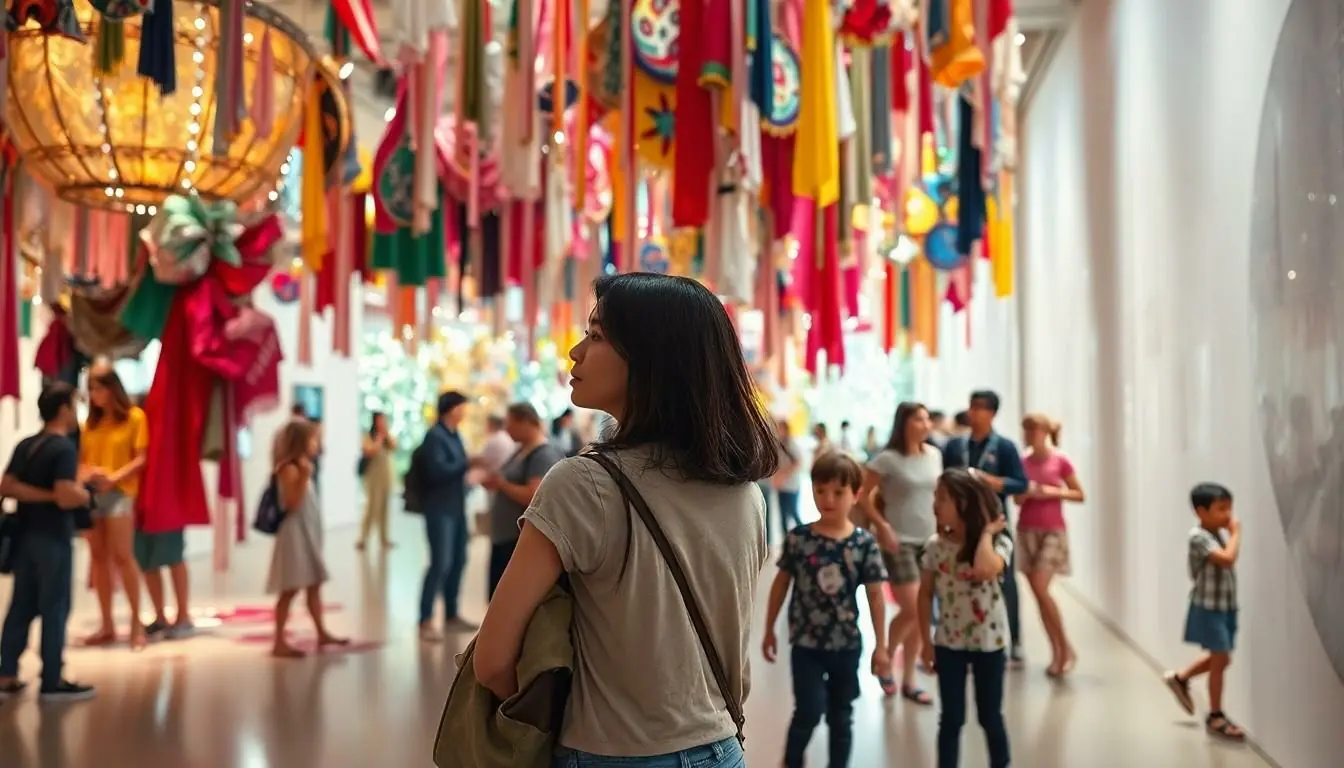Table of Contents
ToggleInstallation sculptures are the art world’s equivalent of a surprise party—unexpected, immersive, and often leaving you wondering how you ended up in this wild, creative space. These three-dimensional works of art transform a room or outdoor area into a captivating experience, inviting viewers to step inside and interact with their surroundings. Forget the traditional canvas; installation sculptures break the mold, literally and figuratively, by engaging multiple senses and sparking emotional responses.
Imagine walking into a gallery and finding yourself surrounded by giant, whimsical structures that challenge your perception of reality. Installation sculptures can be playful, thought-provoking, or downright bizarre, but they all share one common goal: to engage and inspire. Whether it’s a towering piece made of recycled materials or a cozy nook filled with sound and light, these artworks redefine how we experience art and encourage us to see the world from a fresh perspective.
Understanding Installation Sculpture
Installation sculpture transforms spaces into immersive environments that engage viewers on multiple levels. These artworks often occupy entire rooms or outdoor areas, turning them into unique experiences.
Definition of Installation Sculpture
An installation sculpture combines various materials and media to create a three-dimensional artwork. These pieces focus on interactions within a given space, encouraging viewers to explore and engage physically and emotionally. Elements such as sound, light, and movement frequently accompany installation sculptures, enhancing the overall experience. Artists often design these works to provoke thought and stir emotions, inviting unique interpretations from each observer.
Historical Context
Installation sculpture emerged in the mid-20th century, fueled by movements like Minimalism and Conceptual Art. Artists sought to break free from traditional gallery settings, incorporating the surrounding space into the artwork. Pioneers such as Claes Oldenburg and Yayoi Kusama played pivotal roles in defining this art form. In the 1960s and 70s, artists increasingly used everyday materials to make their works accessible and relatable. As the years progressed, installation sculptures diversified, incorporating advanced technology and interactive components, pushing the boundaries of conventional art.
Characteristics of Installation Sculpture

Installation sculptures feature distinct characteristics that set them apart from traditional art forms. Their emphasis on the environment plays a crucial role in shaping the viewer’s experience.
Site-Specific Nature
Site-specific installation sculptures respond directly to their surroundings. Artists often consider the architecture, landscape, and cultural context of a location. This tailored approach encourages viewers to engage with both the artwork and the site itself. For instance, a sculpture placed in a natural setting may reflect the landscape’s textures and colors. Additionally, the interaction between the artwork and its environment enhances viewer perception and emotional impact. The sculptural experience transforms the space, encouraging visitors to explore and reflect in a profound way.
Use of Mixed Media
The use of mixed media characterizes many installation sculptures, blending various materials and formats. Artists frequently combine traditional elements, such as wood and metal, with unconventional items, including found objects and digital components. This diversity fosters rich textures and layers within the artwork. Audio and visual elements can also play a significant role in enhancing the experience. For example, integrating soundscapes or projected images creates an immersive atmosphere. Mixed media not only broadens creative expression but also challenges viewers’ perceptions of what art can be.
Purpose and Impact of Installation Sculpture
Installation sculptures serve a multifaceted purpose, impacting viewers on both emotional and psychological levels.
Emotional and Psychological Effects
Artists design installation sculptures to elicit specific emotional responses. Viewers often experience feelings of joy, nostalgia, or even discomfort when engaging with these pieces. Surrounding elements, like sound and light, amplify these feelings, creating immersive environments that encourage introspection. Emotional connections may deepen when installations reflect personal or societal themes. Such relevance fosters a compelling dialogue on human experiences, prompting reflection on concepts like identity and existence. Engagement with installation sculptures often occurs subconsciously, allowing viewers to process emotions in profound ways.
Engaging the Audience
Engagement thrives in the interactive nature of installation sculptures. Artists frequently incorporate elements that invite viewer participation, blurring boundaries between observer and artwork. The spatial arrangement encourages exploration, allowing individuals to navigate and interact with their environments. By creating a dialogue through sensory experiences, installations transform passive viewing into active participation. This unique approach captivates audiences, fostering a sense of ownership and personal connection to the artwork. As visitors explore, they become part of the narrative, enriching their experience and understanding of contemporary art.
Notable Installation Sculptures
Installation sculptures captivate audiences with their immersive experiences and unique qualities. Various artists have left significant marks on this art form, creating memorable works that challenge perceptions.
Famous Artists and Their Works
Claes Oldenburg transformed everyday objects into monumental installations, exemplified by “Soft Toilet.” Meanwhile, Yayoi Kusama’s “Infinity Room” immerses viewers in a world of reflections and lights. Olafur Eliasson’s “The Weather Project” engages senses by simulating sunlight in a gallery. Christo and Jeanne-Claude enveloped large areas in fabric, as seen in “The Gates,” which created a striking visual impact in Central Park. Each artist’s approach contributes distinctly to the evolution of installation sculpture.
Iconic Installation Sculptures
“Spiral Jetty” by Robert Smithson combines earth and water into a monumental land art piece. Ai Weiwei’s “Sunflower Seeds,” made from millions of porcelain seeds, invites contemplation on mass production and individuality. Anish Kapoor’s “Cloud Gate” reflects the city of Chicago, drawing in visitors to explore its surface. Light and color define Olafur Eliasson’s “Your Rainbow Panorama,” a circular walkway that provides stunning views. These iconic works exemplify diverse approaches, allowing deeper connections with their surroundings.
Installation sculptures represent a dynamic shift in the art world. Their ability to transform spaces into immersive experiences invites viewers to engage on multiple levels. By blending various materials and media artists create environments that provoke thought and emotion.
As they evolve with technology and interactivity these sculptures continue to challenge traditional notions of art. Each installation offers a unique opportunity for personal reflection and societal commentary. Ultimately installation sculptures not only redefine artistic expression but also deepen the connection between art and audience.




